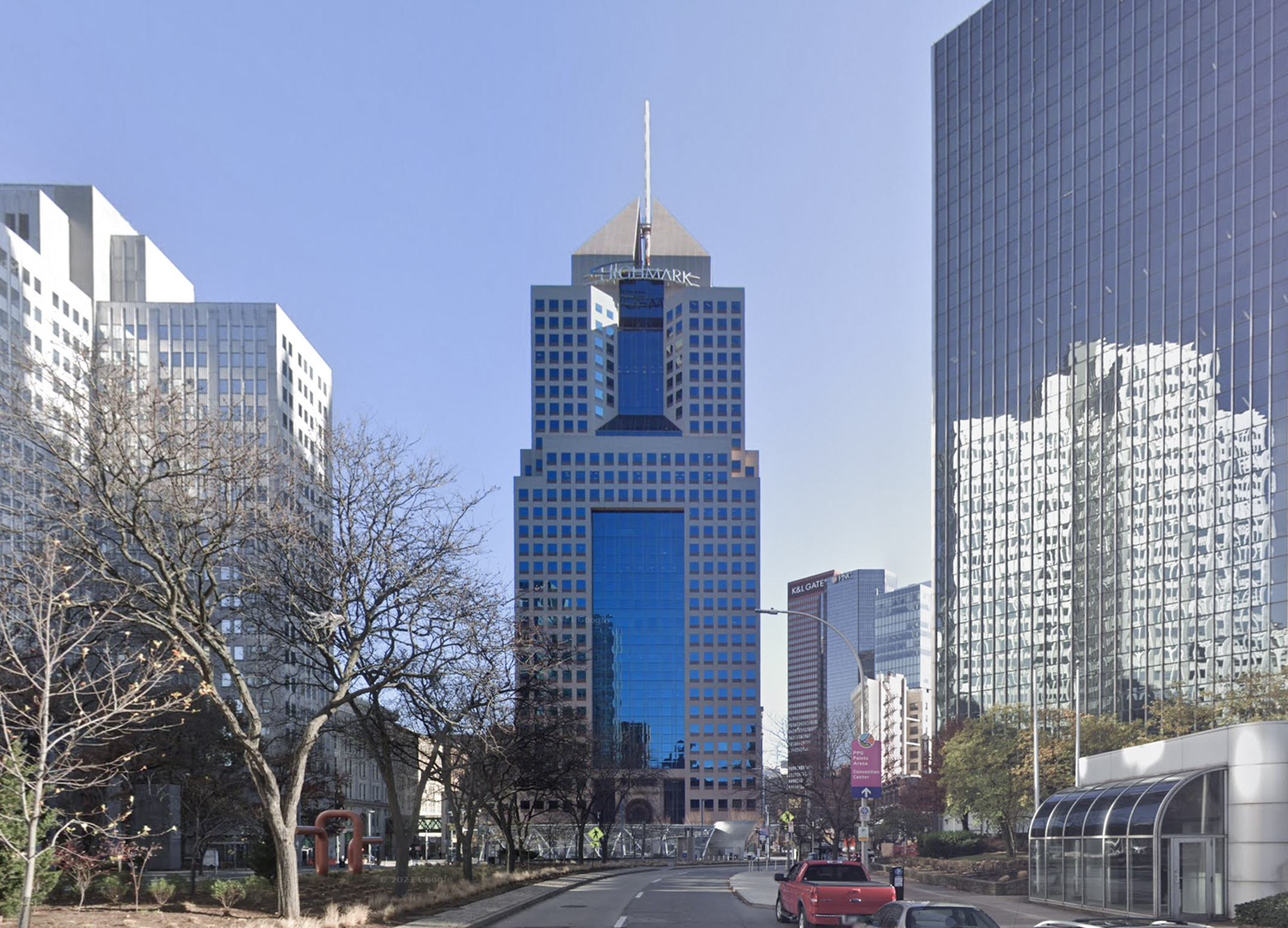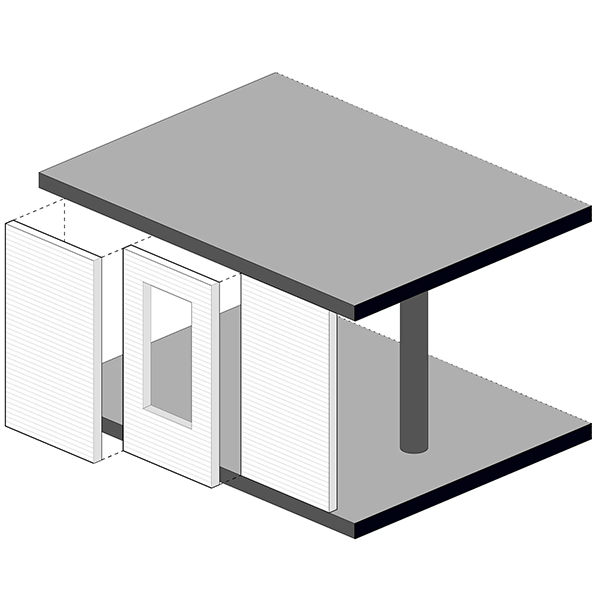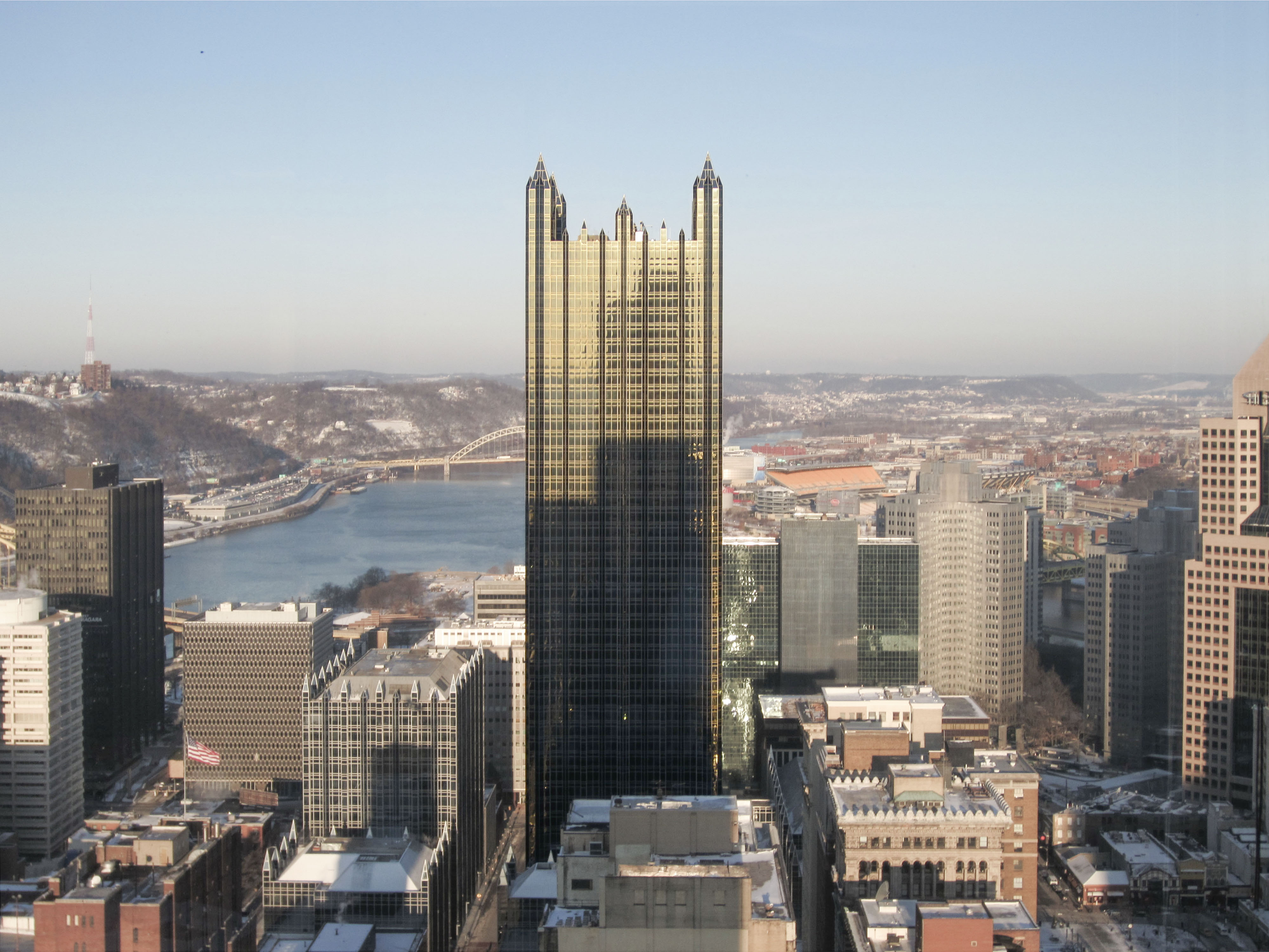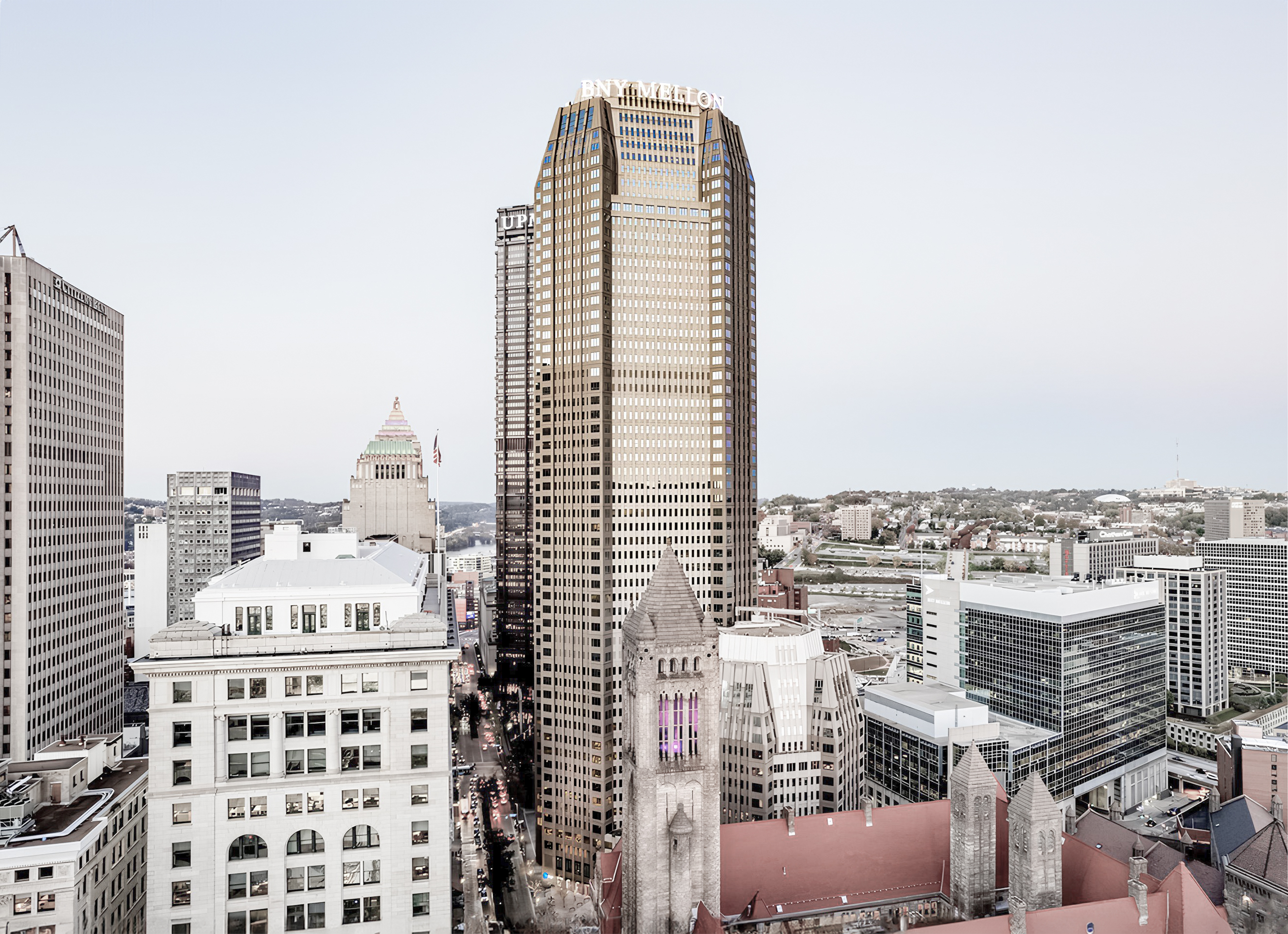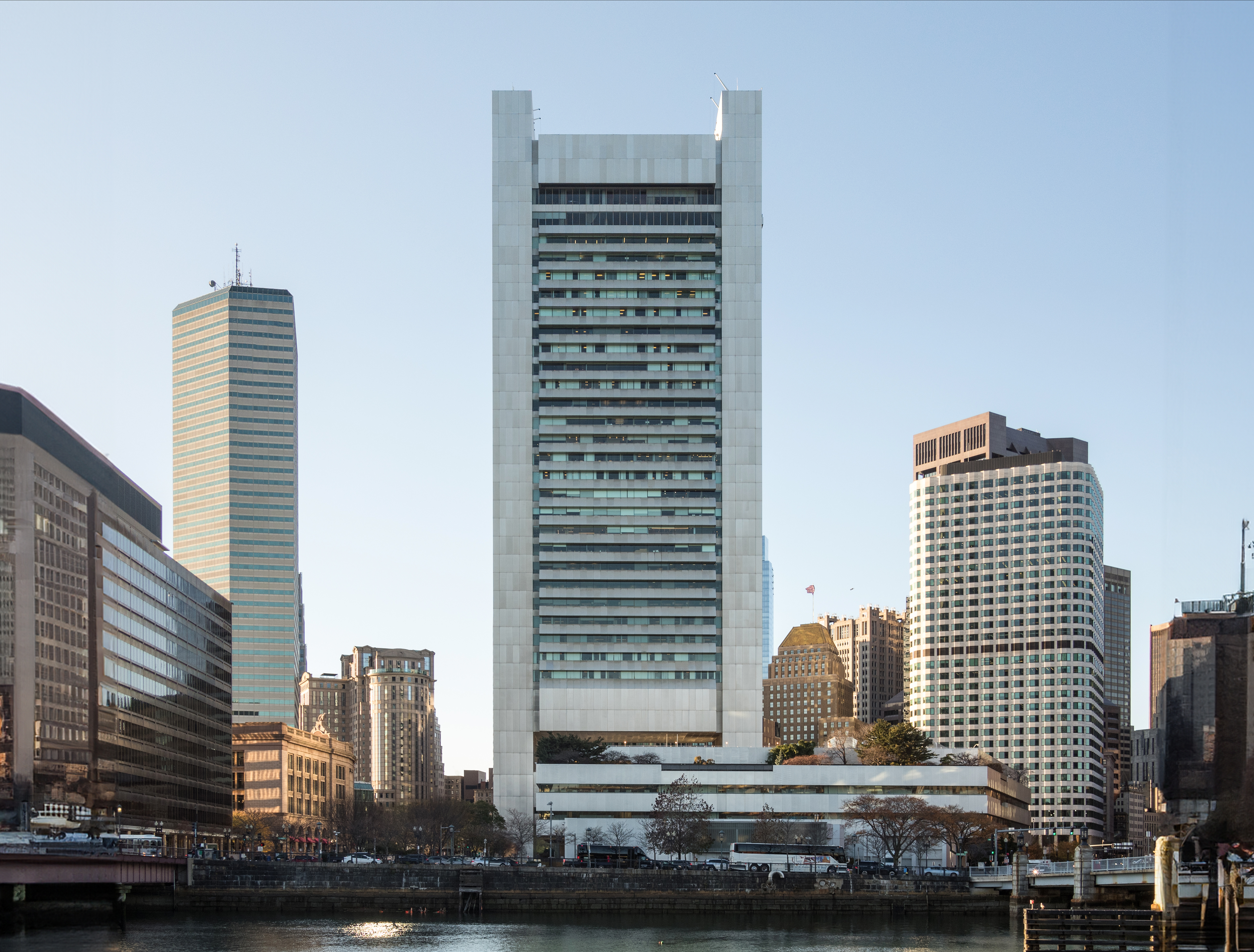The Fifth Avenue Place is a Postmodernist skyscraper designed by Stubbins Associates, in association with WTW Architects, and built between 1985 and 1988, for a reported $100 million dollars, in Pittsburgh, PA.
Fifth Avenue Place is not the only name you might know this building by though. Between 1985 and 1988 it was also known as Hillman Tower.
Its precise street address is 120 Fifth Avenue Place, Pittsburgh, PA. You can also find it on the map here.
The building underwent a major restoration between 2019 and 2023. The architect commissioned to undertake this restoration was AE7.
